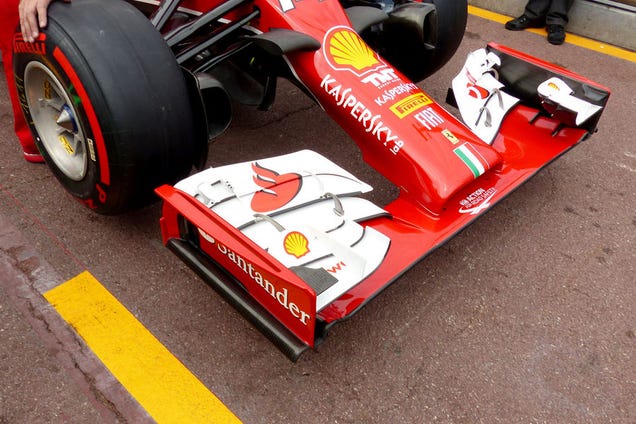wesley123 wrote:Andres125sx wrote:
First, as Platinum Zeloat said, the unreliability of ground effect was 40 years back, I´d like to think in 40 years engineering has evolved enough.
To a certain extent, sure. However, the laws of physics don't change. The same dangers are still present.
Obviously, but there´re new technologies to solve those dangers, active suspension is the most significant for this case as it can keep the gap constant easily
wesley123 wrote:Also, keeping a constant distance to the ground is a fun thing, what about the curbs? That sure would change the position sufficiently to upset the ground effects.
When you'd allow active suspension you'd just end up with the teams making overly agressive ground effects aero because that's the only position they have to make it work. Which will be great when this setting would be somewhat upset, which brings it all back to the original problem of ground effects; It's too unstable.
Curbs are the same now, we´ve seen some accidents due to some car jumping and loosing tire contact with asphalt. Maybe it would be a solution to stop them using curbs too much, with ground effect they simply would need to avoid curbs completely...
Anycase ground effect was just an example, if too dangerous there´re many more banned technologies wich may be allowed to compensate the reduction in downforce with wings that does not produce so much dirty air
wesley123 wrote:Teams have power to overcome drag penalty, so whatever rule change would be proposed wont change much, as teams aim for max downforce anyways, which in turn brings back the dirty air.
Agree, but if they´re forced to use cambered airfoils, maybe with a limited AoA, they can do what they want, those cars will generate a lot less turbulence than currently
wesley123 wrote:F1 uses the second wing, for as much as you can divide them in those three classes. The wings are highly optimized to bring the best downforce in incredible ranges of AoA.
Sorry but you only have to look at any wing to notice the upper side is concave, maybe they´re not perfectly flat, but neither cambered
The endplates show the airfoil perfectly, remember the AoA, the wing is not leveled, so the upper side is
very concave, wich means generate tons of downforce, but lots of drag too. The rear one even with DRS open


wesley123 wrote:You'll end up with teams just optimizing the whole package to suit their needs in a similar fashion again.
Sorry but bs, then no rule do anything, let´s let them total freedom...
Wings follow a basic rule, drag and downforce are proportional, if you force them to use an airfoil and/or limited AoA, drag and dirty air will be reduced, it is this simple
wesley123 wrote:For example, allow ground effect and force them to use cambered wings. Same downforce, less turbulence
If only it was that simple.
Not simple, but posible... if they try. Freezing engines and allowing free airfoils, free AoA, etc they will solve nothing about dirty air, that´s sure
wesley123 wrote:It can only be done so much, it's an effect of the drag created by the car. So to reduce turbulence, you'd need less drag. The only way to really force less drag through is to limit power, as then the drag can't be overcome so easily anymore. Which brings the next issue; People don't like F1 with 400bhp engine packages.
If they´re as fast as now thanks to a more efficient aero wich allows to use smaller engines without increasing laptimes, and they watch much more on track battles because it´s easier to chase a car really close, they´ll be very happy, period




